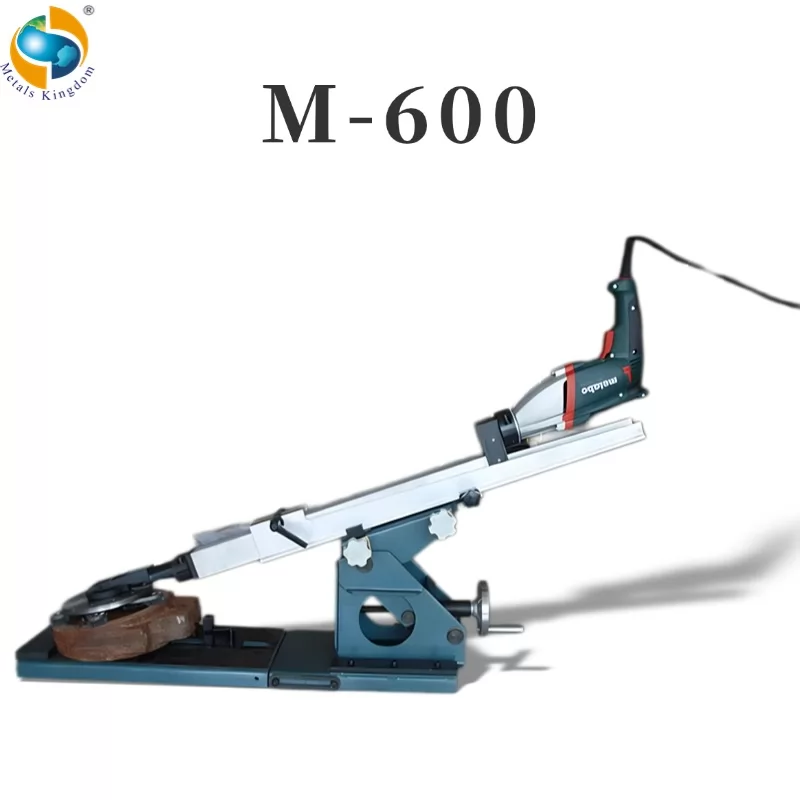Pipe beveling is the process of forming an angle between the edge of the pipe or the end of the tube and a plane perpendicular to the surface. The standard pipe bevel angle for welding is 37.5 degrees. Other angles and special forms, such as j bevel angle can also be produced using an automatic pipe beveling machine at the end of the pipe or tube.

GGJ Portable Pipes Cutting Machine
Why bevel a pipe?
The bevel of a pipe or tubing is the most commonly used to prepare the ends for welding. For safety and aesthetic considerations, it can also be used for deburring the cutting ends.
Pipe beveling is the process where an angle is formed between the edge of a tube or pipe and a plane perpendicular to the surface. It is used to prepare metal for a welded seam by cutting a slope on the edge of the metal. It can also be used for deburring the cut ends for aesthetic and safety reasons. From simple to complex metal structures, welding is an integral part of producing pipe and has a wide diverse range of applications. Different angles apply to different applications. But in most cases, the standard bevel is a 37.5 degree angle.
Why do companies automate the pipe beveling?
• Save time-the stationary pipe beveling machine is many times faster than other methods, such as manual grinding, flame-cutting, hand-held beveling machine, or loading into a lathe.
• No more dirty operations, such as hand grinding or torches.
• The bevel angle of the pipe is consistent and accurate each time, and the bevel or deburr ID of the pipe end face can be adjusted as needed.
• The cycle time is usually in the range of 5 to 20 seconds, depending on the size
• Eliminate the ergonomic problems caused by the operator when operating hand tools
• All chips are contained in the machine, which is safer than manual grinding or torch grinding.
• Low operating cost, mainly using industry-standard carbide tools
• Easy to bevel stainless steel and materials that are not suitable for torch burning.
• Special forms such as j bevels are easy to produce.
• Can be operated by a non-skilled operator once set up.
• Our pipe beveling machine will provide a safer, more accurate, and more repeatable pipe beveling than any manual method.
Useful Techniques and Handy Tips for Using Portable Pipe Bevelers
• Know Your Equipment’s Capability – Not all pipe bevelers are capable of the same jobs. Make sure you aren’t trying to bevel materials or wall thicknesses that the equipment is not rated to bevel.
• Secure All Mechanisms – Before operation, make sure that all clamping mechanisms are in their proper place and secured. The parts and the milling surfaces need to be held firmly to avoid damage to tools and parts—not to mention operators. • Keep the power off as you do your checks so the machine can’t be accidentally started while you are in the working zone.
• Control Pressures and Feed Rate – Bevelers have an optimum load range where they work most efficiently. Pressures and feed rates may be different for different materials and pipe configurations, so look for signs of distress such as chattering or • excessive heat buildup. Over time, you’ll get a feel for how to adjust to get the best cut.
• Take care with the initial feed rate as it makes the first cut into the pipe. Increasing the pressure too fast can harm the part and will wear the tool down faster.
• Watch Your Cords – If you are using an electric-powered unit, be mindful of cord placement. Before you start, make sure the cord is free of any areas with fluids and is in an area that won’t obstruct your motion around the pipe surface.
• Keep Parts Clean – Allowing residues to build up on equipment can lead to poor performance and shorter tool life and could potentially damage future parts. It’s important to clean equipment and parts after use and put them away properly so they don’t get lost or damaged.
Check out all our pipe beveling machines and explore the full range of pipe beveling solutions. We are Pipe beveling machine suppliers. Please feel free to contact us if you need or want to know about pipe beveling machines.












